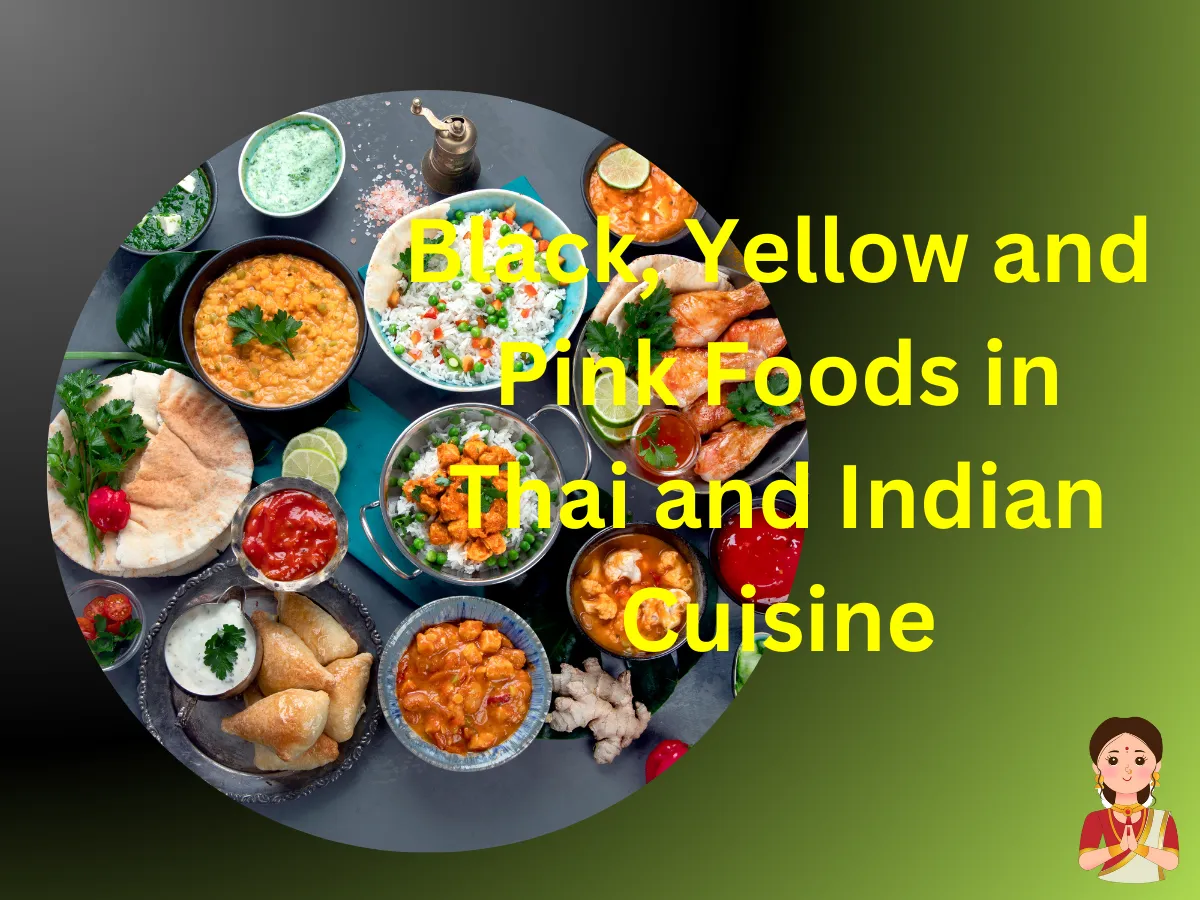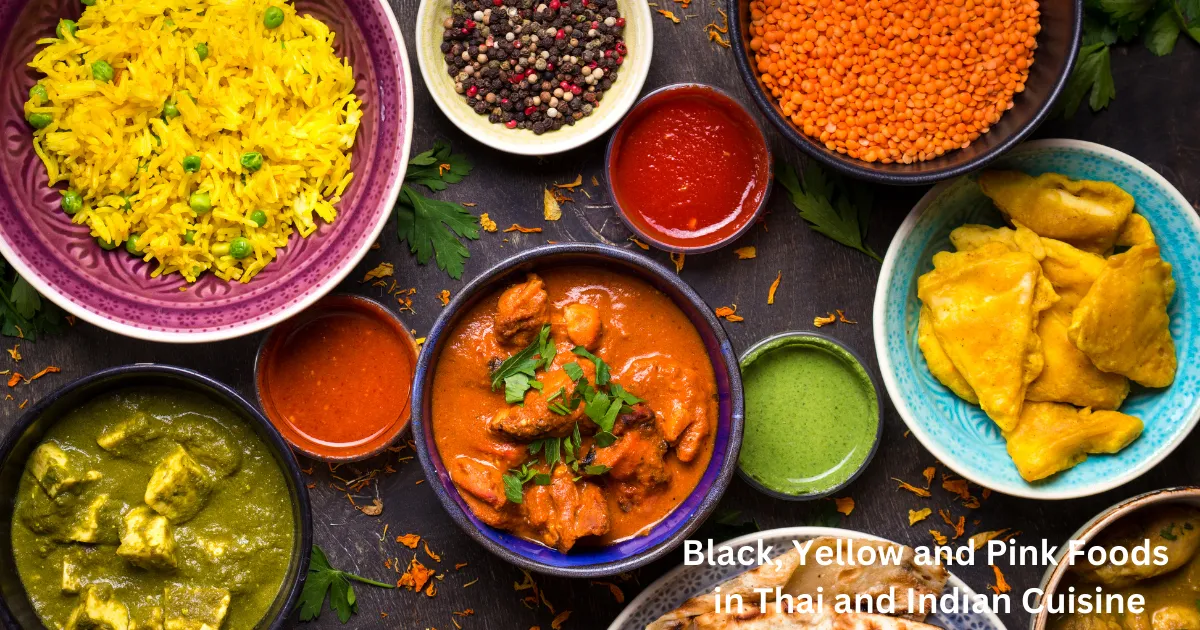Last updated on August 17th, 2025 at 07:54 am
Black, Yellow, and Pink Foods – Are you tired of eating the same old food? Are you looking to add some excitement and variety to your meals? Well, forget about the usual green and brown foods because today, we’re diving into the world of black, yellow, and pink food! Yes, you heard that right – there are some truly unique and vibrant colored foods out there waiting to be discovered.
While we’re all familiar with the typical food colors, black, yellow, and pink may not be the first shades that come to mind. However, these colors can add a new visual appeal and flavor to your dishes. Whether you’re a foodie looking to experiment with different ingredients or add fun to your plate, exploring the world of black, yellow, and pink food will surely excite your kitchen.
This article will examine some of the most intriguing and delicious black, yellow, and pink foods. From exotic fruits and vegetables to unique spices and ingredients, we’ll explore the options available to spice up your meals. Prepare to embark on a colorful culinary adventure that will tantalize your taste buds and add a vibrant twist to your dining experience.
How Black, Yellow, and Pink Foods Create Magic in Asian Cuisine
Black Food
Examples from Various Cuisines:
- Squid Ink Pasta (Italian)
- Black Rice (Asian)
- Black Bean Soup (Latin American)
Yellow Food
Popular Dishes:
- Paella (Spanish)
- Mango Sticky Rice (Thai)
- Cornbread (American)
Pink Food
Types of Pink Food:
- Beetroot Salad (Eastern European)
- Sakura Mochi (Japanese)
- Shrimp Tacos (Mexican)
Common Ingredients:
- Squid ink: Adds a rich, salty-seafood flavor and deep black color.
- Black rice: Also known as forbidden rice; it’s nutty and slightly sweet.
- Black beans: A versatile legume, hearty and rich in flavor.
Cultural Significance:
- In Japanese culture, black food is often associated with longevity and health.
- Italian cuisine uses squid ink for its unique flavor and dramatic presentation.
Health Benefits:
- Black beans are high in protein and fiber.
- Black garlic, another black food, is known for its antioxidant properties.
Key Ingredients:
- Turmeric: Gives a vibrant yellow color and earthy flavor.
- Saffron: A luxurious spice that colors and flavors dishes like risotto Milanese.
- Mango: Adds natural sweetness and color to desserts and salads.
Cultural Traditions:
- In India, turmeric is used in cooking and religious ceremonies, symbolizing purity and prosperity.
- Yellow foods like polenta are staples in Italian feasts, representing the bounty of the harvest.
Nutritional Value:
- Yellow bell peppers are rich in vitamins C and A.
- Lemons, a common yellow food, are high in vitamin C and aid in digestion.
Sources of Pink Color:
- Natural: Beetroot, pink Himalayan salt, and certain seafood like salmon.
- Artificial: Food coloring used in desserts and candies.
Cultural Significance:
- In Japan, pink foods like sakura mochi are enjoyed during cherry blossom season, symbolizing the beauty and transience of life.
- Pink salmon is celebrated in Pacific Northwest cultures, integral to local diets and traditions.
Unique Flavors or Textures:
- Beetroot adds an earthy sweetness and tender texture to dishes.
- Pink grapefruit offers a tangy, slightly bitter flavor, great for salads and cocktails.
Black, Yellow and Pink Foods in Thai Cuisine
Thai cuisine, renowned for its vibrant flavors and colors, incorporates a variety of ingredients that bring not only a burst of color to the plate but also a wealth of nutritional benefits and cultural significance. Let’s explore how black, yellow, and pink foods manifest in Thai dishes, highlighting their unique attributes and roles within this rich culinary tradition.
Black Food in Thai Cuisine
Examples:
- Black Sticky Rice (Khao Niew Dam): A dessert ingredient often paired with coconut milk and mango. This rice offers a nutty flavor and chewy texture, making it a beloved treat.
- Squid Ink: Used in dishes like squid ink soup and noodles (asian noodles), adding a deep sea flavor and striking black color.
Significance and Benefits:
- Black sticky rice is rich in antioxidants and fiber, contributing to heart health and digestion.
- Squid ink is believed to have immune-boosting properties.
Yellow Food in Thai Cuisine
Examples:
- Turmeric Fried Rice (Khao Pad Kamin): Turmeric gives this rice dish its characteristic yellow color and subtle earthiness.
- Yellow Curry (Gaeng Kari): A milder curry compared to its red and green counterparts, made with turmeric, curry powder, and coconut milk.
Significance and Benefits:
- Turmeric, a key ingredient in yellow dishes, is known for its anti-inflammatory and antioxidant properties.
- Yellow curry, often containing potatoes and chicken, provides a comforting and satisfying meal with a balance of protein, fat, and carbs.
Pink Food in Thai Cuisine
Examples:
- Yum Woon Sen with Shrimp: A spicy glass noodle (asian noodles) salad where pink shrimp not only adds a pop of color but also sweetness against the dish’s heat and tang.
- Sakura Shrimp Paste Rice (Khao Kluk Kapi): Although shrimp paste is more reddish, it can impart a pink hue to rice, especially when mixed with shallots, sugar, and lime.
Significance and Benefits:
- Shrimp is a low-fat source of protein and essential omega-3 fatty acids.
- The use of sakura shrimp, though more common in Japanese cuisine, reflects the Thai culinary tradition’s adaptability and embrace of regional ingredients.
Black, Yellow, and Pink Foods in Thai Cuisine – Conclusion
Thai cuisine’s use of black, yellow, and pink foods showcases the country’s rich culinary diversity and ability to blend taste, nutrition, and aesthetics into every dish.
From the antioxidant-rich black sticky rice to the comforting warmth of yellow curry and the vibrant freshness of pink shrimp dishes, Thai food offers a palette of colors that reflect its cultural heritage and culinary ingenuity.
By exploring these colorful dishes, one can experience the flavors of Thailand in their most vibrant and healthful forms.
Black, Yellow and Pink Foods in Indian Cuisine
Indian cuisine, celebrated for its complex flavors and vibrant colors, incorporates a rich palette of ingredients that enhance the visual appeal of its dishes and bring significant cultural, nutritional, and medicinal values. Let’s explore the significance of black, yellow, and pink foods within the Indian culinary tradition.
Black Food in Indian Cuisine
Examples:
- Black Dal (Dal Makhani): A creamy, rich lentil dish made with black lentils, kidney beans, butter, and cream, simmered for hours to achieve its distinctive flavor.
- Black Rice: Known as Chak Hao in Manipur, this aromatic rice is used in making desserts like puddings and traditional dishes.
Significance and Benefits:
- Black dal is not only comforting but packed with protein and fiber, essential for a balanced diet.
- Black rice is rich in antioxidants, particularly anthocyanin, which has anti-inflammatory and anti-cancer properties.
Yellow Food in Indian Cuisine
Examples:
- Turmeric Rice (Haldi Ka Chawal): A simple yet flavorful dish where turmeric not only imparts a vibrant yellow color but also a multitude of health benefits.
- Yellow Lentil Dal (Toor Dal): A staple in Indian households, seasoned with turmeric and spices.
Significance and Benefits:
- Turmeric, a key ingredient in many yellow dishes, is known for its anti-inflammatory properties and plays a significant role in Ayurvedic medicine.
- Yellow lentils are a great source of protein, essential for muscle building and repair.
Pink Food in Indian Cuisine
Examples:
- Beetroot Halwa: A sweet, dense pudding made from grated beetroot, milk, sugar, and ghee, garnished with nuts.
- Pink Kashmiri Tea (Noon Chai): A traditional tea from Kashmir, it’s pink in color and made with special tea leaves, baking soda, and milk.
Significance and Benefits:
- Beetroot, the main ingredient in Beetroot Halwa, is high in fiber, vitamins, and minerals, particularly folate and manganese.
- Noon Chai is rich in antioxidants and provides a warming, energizing effect, ideal for cold climates.
Black, Yellow and Pink Foods in Indian Cuisine – Conclusion
Indian cuisine’s use of black, yellow, and pink foods exemplifies the diversity and richness of India’s culinary heritage.
Each color not only signifies a range of flavors and textures but also embodies the cultural traditions and health-conscious practices deeply rooted in Indian society.
From the nutritious black lentils and antioxidant-rich black rice to the vibrant turmeric-infused dishes and visually striking pink foods, Indian cuisine offers a delightful exploration of colors that celebrate life, health, and well-being.
Feast Your Eyes: Vibrant Black, Yellow, and Pink Foods in Asian Recipes
Embark on a culinary journey through the vibrant landscapes of Asian cuisine, spotlighting black, yellow, and pink foods that bring more than just color to your plate—they get a burst of flavor and a host of health benefits.
Black Foods: Dive into the rich tones of black foods, where the robust flavors of black soybeans and the sweet undertones of black sugar reign supreme. Black soybeans, a staple in Asian diets, are often used in traditional dishes like Korean black bean noodles (jajangmyeon), offering a hearty taste and high protein content.
Popular in Taiwan and Japan, black sugar is unrefined and retains molasses, adding a deep, caramel-like sweetness to desserts and teas.
Yellow Foods: The bright zest of yellow foods in Asian cooking can’t be overstated. From the tangy burst of yellow tomatoes in Thai salads to the creamy texture of yellow split peas in Indian dal, these ingredients shine.
Don’t overlook the refreshing crispness of yellow watermelon, often enjoyed in summer fruit platters across Asia, or the subtle sweetness of yellow kiwi, a delightful addition to fruit tarts and smoothies.
Pink Foods: Pink brings a playful vibrance to any dish, and Asian cuisine is no different. Pink dragon fruit, with its stunning hue and speckled flesh, is eye-catching and packed with fiber and antioxidants.
It’s a popular choice in smoothie bowls and desserts. For those seeking a weight loss ally, the pink drink—a blend of grapefruit, pink lemonade, blueberry—is often touted for its metabolism-boosting properties.
These colors are not just a feast for the eyes but also embody the essence of health and wellness in Asian culinary traditions. Each color group supports a wide range of nutrients:
- Black foods are rich in antioxidants, such as anthocyanins in black grapes, which are believed to offer heart health benefits and improve night vision.
- Yellow foods often contain high levels of vitamins C and A, with yellow peppers and yellow melon providing an excellent immune boost.
- Pink foods typically offer lycopene, a powerful grapefruit antioxidant that helps combat oxidative stress and inflammation.
Asian cuisine’s commitment to satisfying the palate and nourishing the body is evident in its colorful ingredient palette. These dishes are a testament to the belief that what we eat should be as pleasing to the eye as beneficial to our health.
Whether garnishing your plate with the pop of pink onions, enriching a soup with yellow beans, or adding a scoop of black chia seeds to your morning oatmeal, embracing these colorful foods can elevate your cooking and contribute to a healthier lifestyle.
Embrace the color revolution in your kitchen with these vibrant staples of Asian cuisine!
Where Sweet Meets Tart. Blueberry Heart.
Experience the delightful dance of sweet and tart. Pink Lemonade Blueberry harmoniously combines the bright, citrusy notes of pink lemonade with the subtle sweetness of plump blueberries, creating a uniquely balanced and irresistible flavor.






February 18, 2024 at 9:12 am[…] Yellow and Pink Foods […]